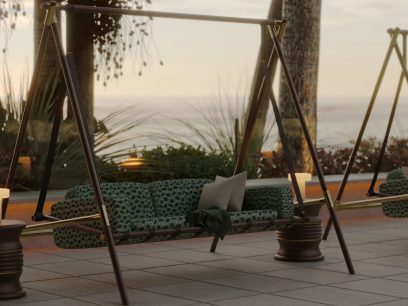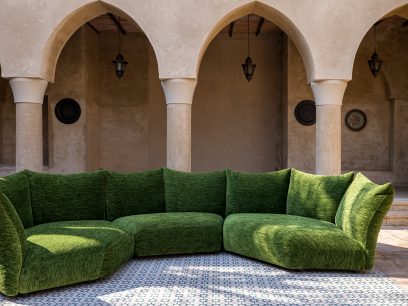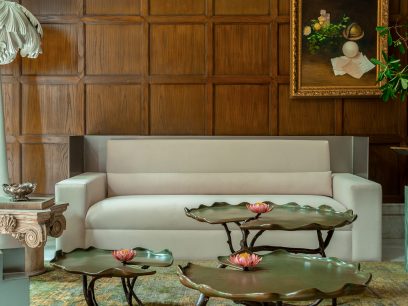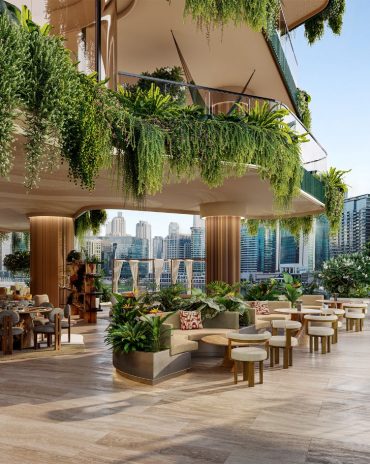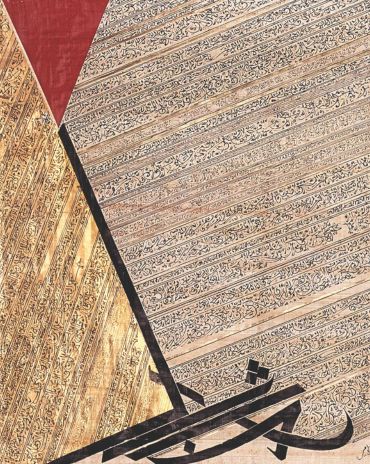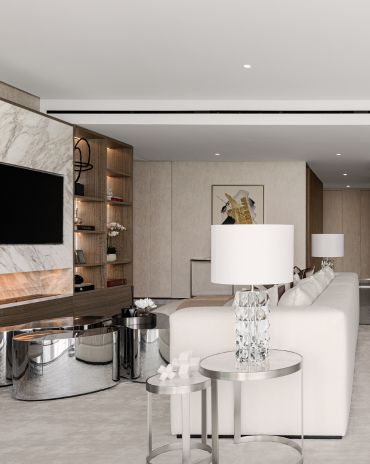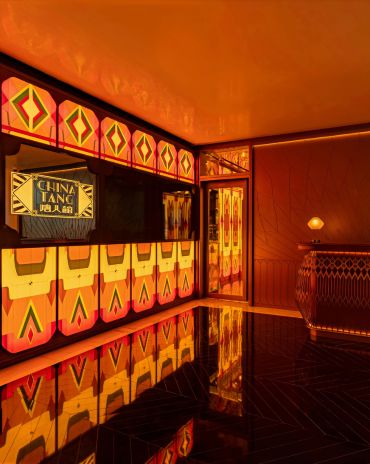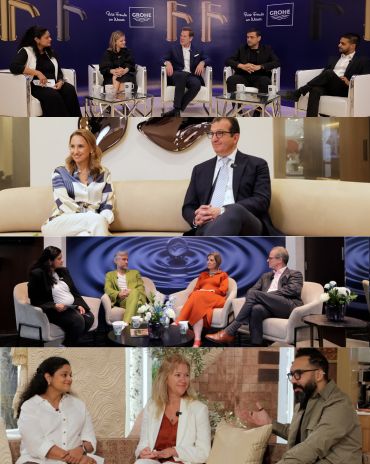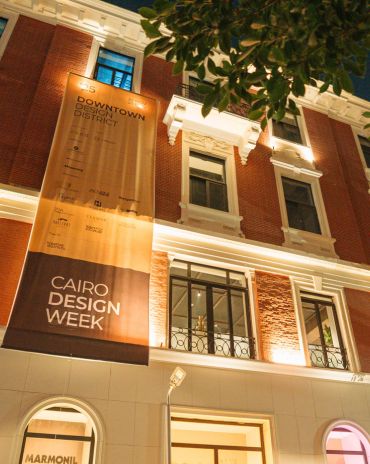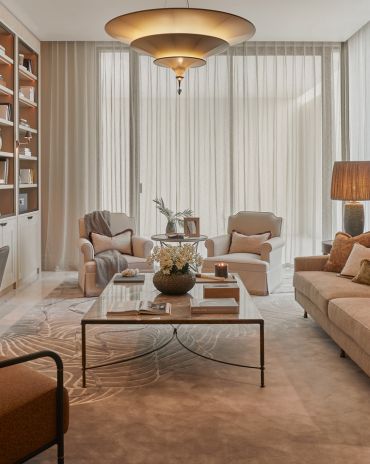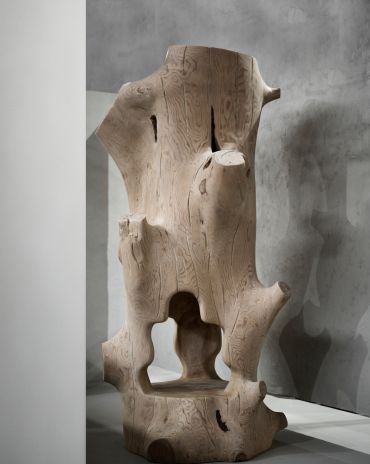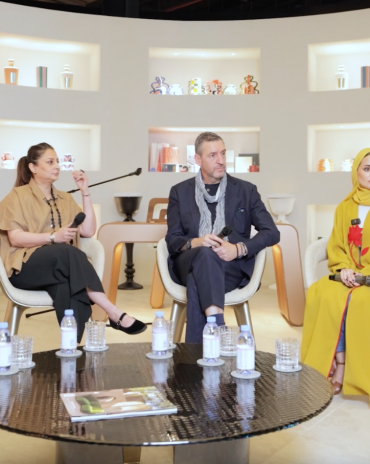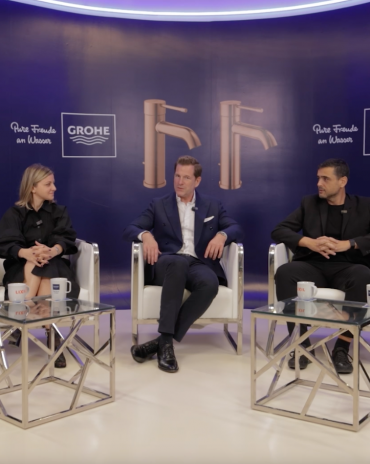Copyright © 2025 Motivate Media Group. All rights reserved.
Contemporary Design Meets Culture
We interview three designers about merging cultural narratives with timeless craft
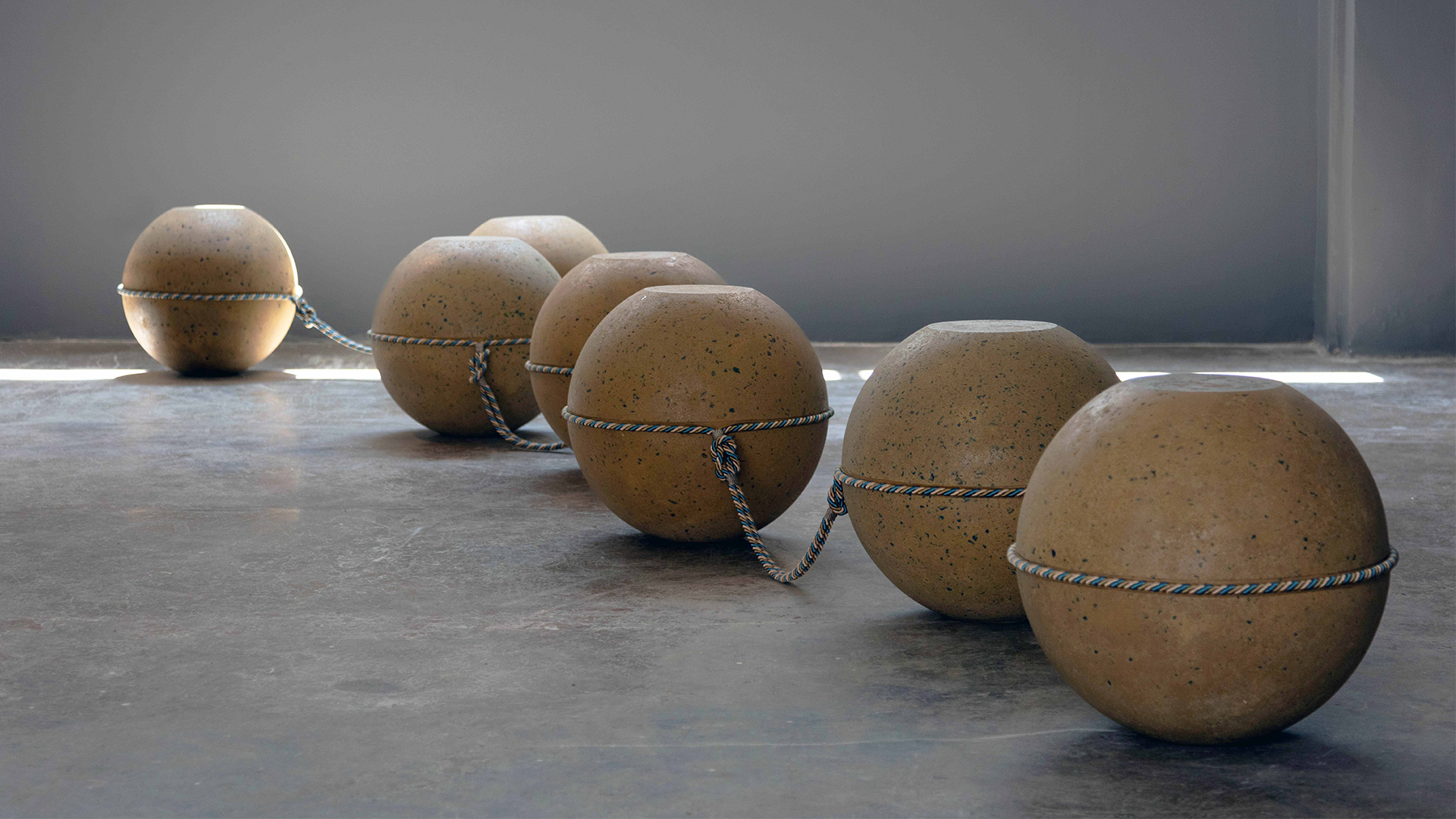
Many often view design objects very much in the sense of art – as a feeling. For some, it is a matter of desire; for others, a potential investment. Then there’s the story behind the piece, and finally, we arrive at the artist. There is another reason for a sense of resonance, one that spans across far beyond the piece: the designer’s identity. It has now become paramount to understand each designer’s distinct philosophies and unveil the deeper meaning that is uncovered beneath the concept and abstraction. A true design piece that resonates with you will not only move you from within and appeal to you through the story; it will also thrill through the unexpected meeting of its creator. This evolution aligns with the increasing emphasis on personal branding in contemporary culture. As collectible design becomes an essential feature in diverse interior spaces, we delve into the work of three visionary designers to explore how cultural heritage and modern innovation shape their narratives. We also uncover what drives their creative practices, their latest projects and their dream collaborations.
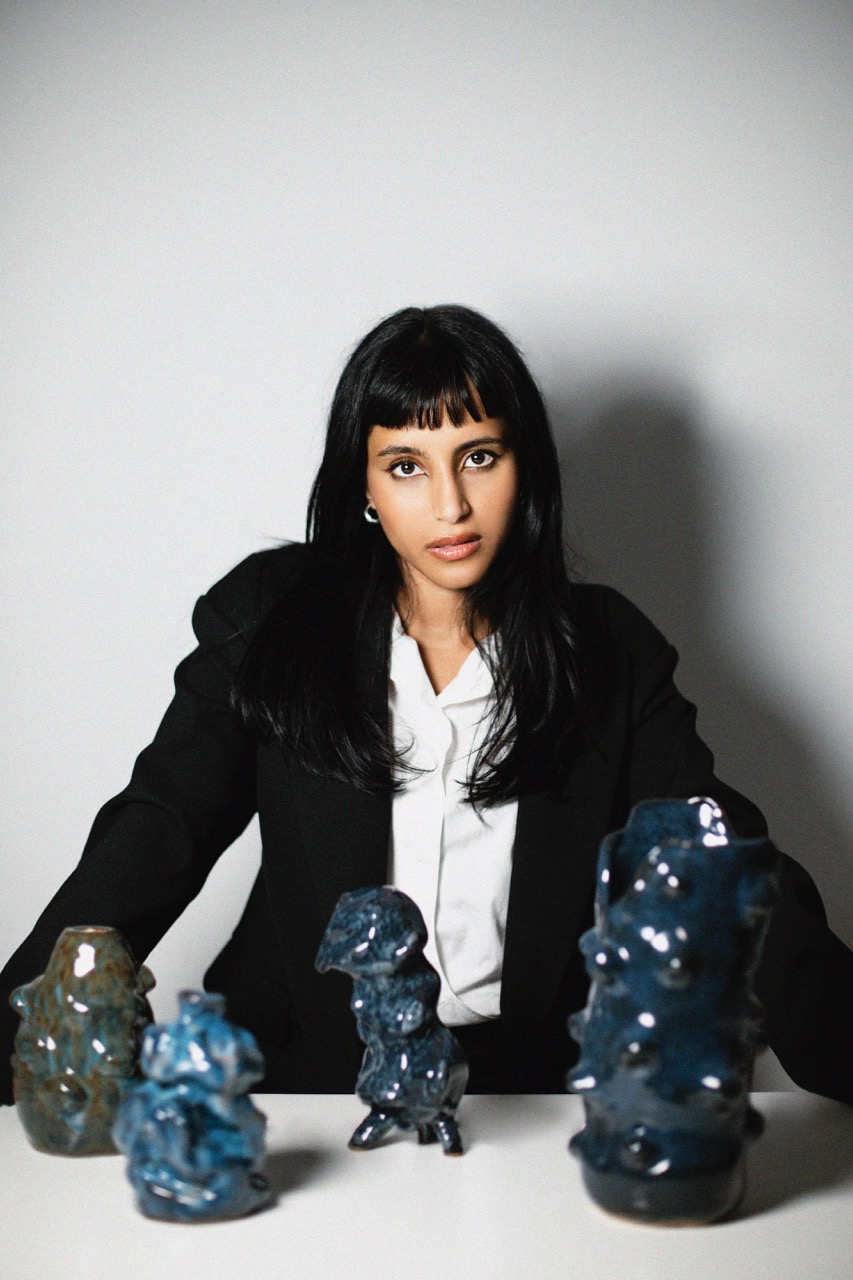
Wafa Al Falahi
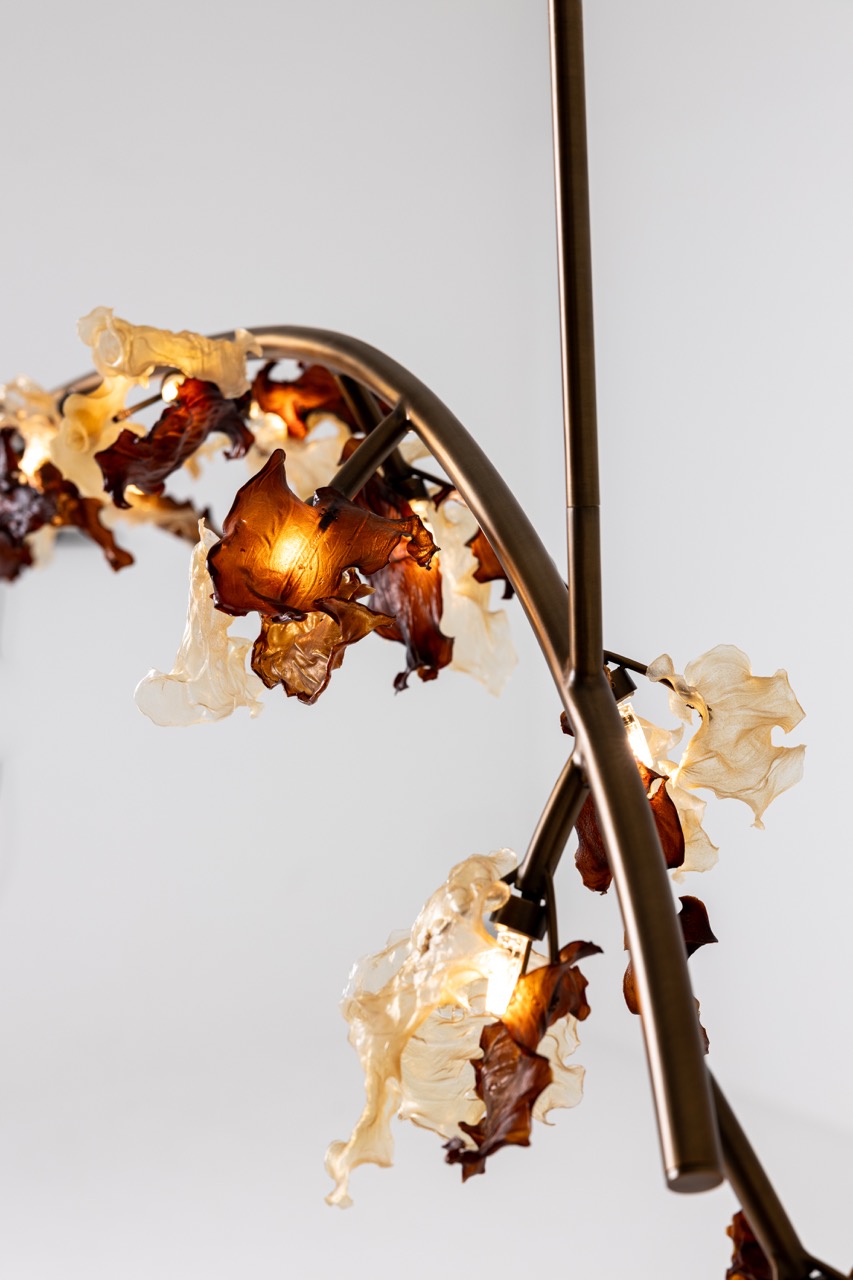
Roots by Wafa Al Falahi, photography by Alin Constantin
Emirati multi-disciplinary designer Wafa Al Falahi’s work bridges culture, history and science, creating intimate environments that blend fluid forms with storytelling. “My design philosophy and creative process are rooted in thorough research and methodology. Whenever I begin a new project, I make sure my ideas are well-informed, guided by a clear line of research and insights. I then move into prototyping and sketching. I believe hand-drawing is a crucial part of the process, as it shapes the direction of the work and allows for a seamless flow of conceptual ideas, which ultimately guide the physical manifestation of the design,” she shares. Al Falahi’s design journey began with the Athath Fellowship, where she created her first functional piece – a chair for potters in the UAE. Her exploration of materials continued with the Tanween 2023 programme, where she developed a bioplastic infused with henna, honouring her grandmother’s traditions. Al Falahi’s practice spans various mediums, including clay, bioplastics, hair and natural materials, all contributing to her dynamic and expressive pieces. Some notable projects include ‘Sprout’ – a bioplastic lamp made from pomegranate remains and displayed at this year’s Maison&Objet – and a bioplastic henna chandelier, which was recently showcased at Vacheron Constantine and Gerbou in two different iterations. As the founder of Sorbe Studios, a design collective focused on creating immersive experiences across interiors, furniture and ceramics, Al Falahi likes to push the boundaries of conventional design. Sorbe Studios is known for its playful, whimsical approach, producing unique works that resonate both with clients and audiences. Besides these projects, Al Falahi is currently refining her practice through the SEAF emerging artists programme, where she is focusing on the themes of memory and space. Al Falahi states that one of her dream collaborations would undoubtedly be with Icelandic–Danish artist Olafur Eliasson. “His approach to immersive, sensory environments and his exploration of light, space and perception resonates deeply with my own artistic practice,” she shares. Al Falahi’s daily creative practices include finishing at least one drawing in her sketchbook, because she believes drawing is one of the most important tools for any designer. “I also like to start my day with reading – whether it’s research papers or novels – since I’ve noticed that what I read often influences how I see and approach my projects,” she shares.
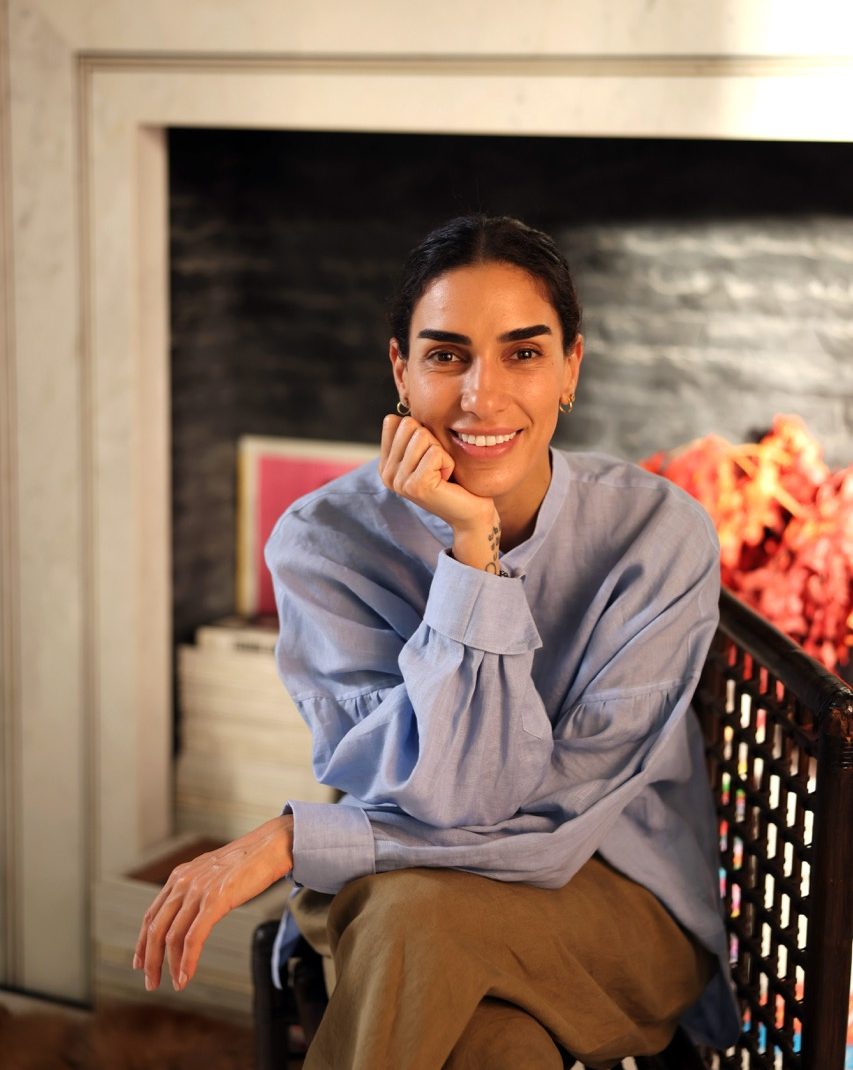
Tessa Sakhi, photography by Elie Abi Hanna
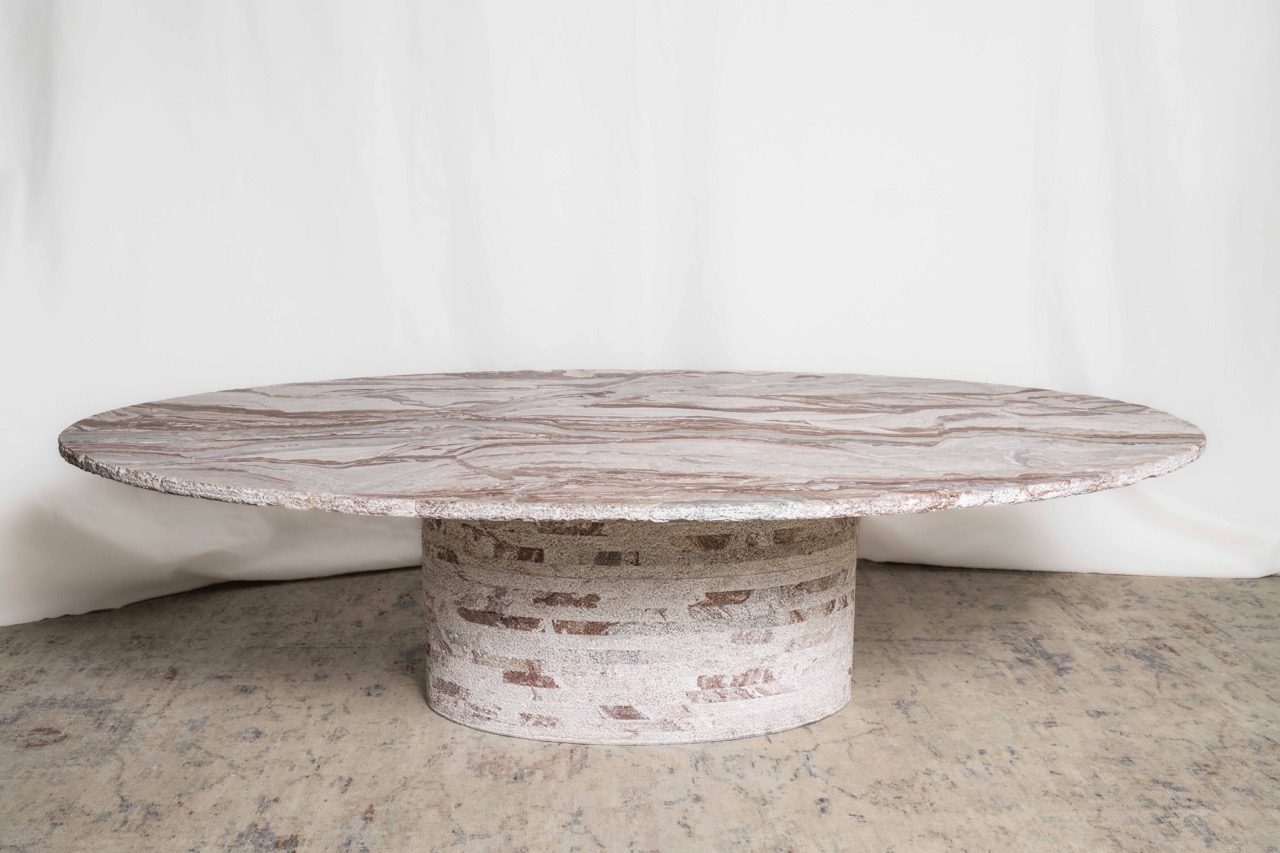
Primitive Collection, Coffee Table Rosso Orobico, photography by Lorenzo Basadonna Scarpa
Tessa Sakhi, an architect and designer based between Venice and Beirut and London, shares that her environment helps shape her work: “I’m inspired on a daily basis – by anyone and anything in my environment or that I encounter along the way. It could be nature, a historical artifact, a building, a painting, a song, a poem, a sentence in a book or even a conversation with a stranger – sometimes even my dogs!” However, whenever she begins a new project, she always starts by researching historical artifacts as her first point of reference. “Somehow, an inspiration comes from the natural environment, where I seek to learn and translate its lessons into sensorial experiences in my designs, and then everything just flows organically,” she states. Some of her recent projects include two residential houses and renovations in Venice. Sakhi also collaborated with her sister Tara (T SAKHI) on the public realm design for the Yard of Alserkal Avenue in Dubai, collaborating with landscape designer Zain Massud. She also worked on Murano sea creature sculptures called ‘Whispers from the Deep’, commissioned for the Design Doha Biennale last year by Qatar Museums, which acquired the pieces to form part of its collection. ‘Sand Pearls’, a sculptural seating piece, was acquired for Abu Dhabi’s Formula 1 VIP Lounge, which was designed by Agata Kurzela. Sakhi collaborates with artisans from diverse cultures, fostering dynamic dialogue and creative exchange, encouraging both traditional craftsmanship and contemporary innovation. Imbued with an artisanal touch, each piece is handcrafted by artisans in Cairo and Italy.

Omar Chakil, photography by Billy Doss
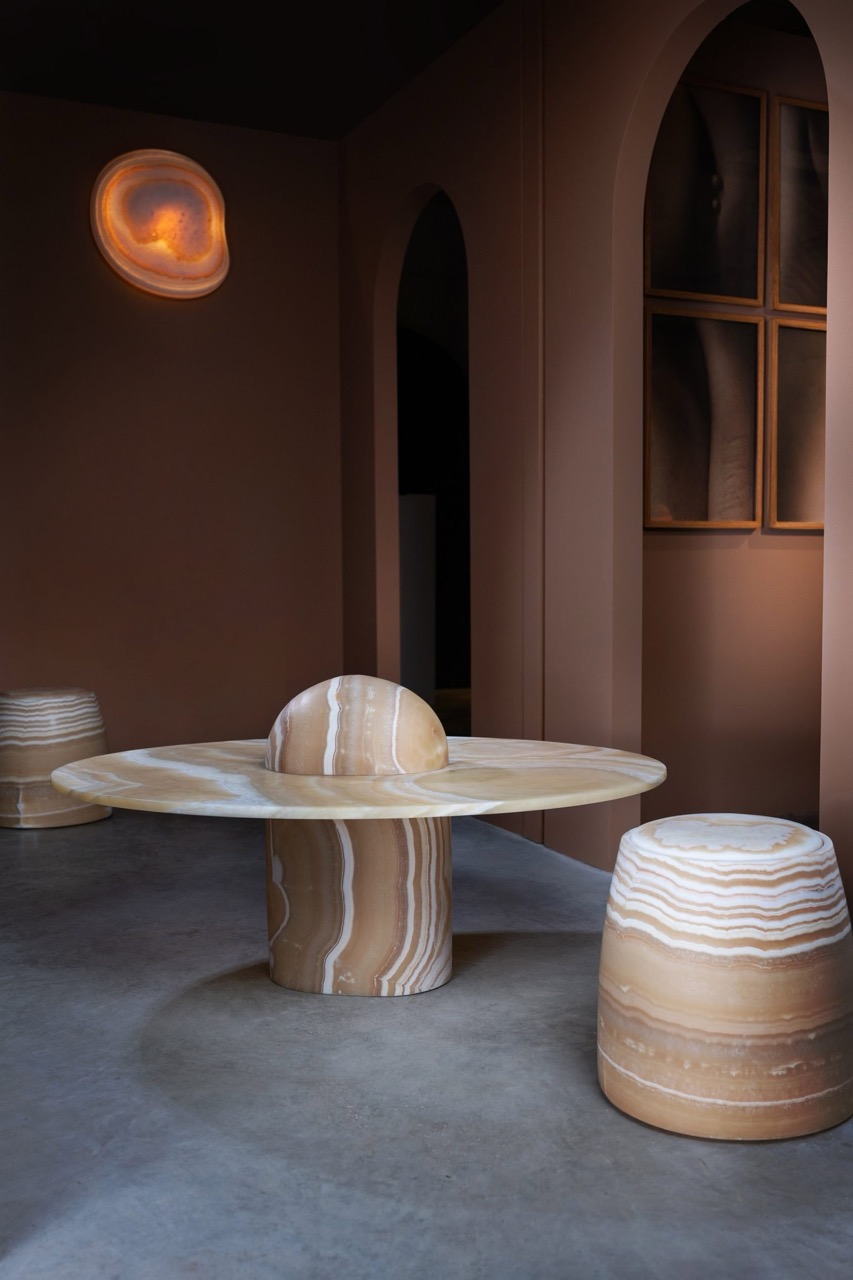
Gros Guiollaume stool, photography by Billy Doss
Omar Chakil, a French-Egyptian-Lebanese designer, will soon present a new body of work that blends craftsmanship, art and design, and is created from his signature Egyptian alabaster and luxury marbles. Chakil offers a fresh take on Egyptian alabaster, bridging its ancient legacy with contemporary design. He will collaborate for the first time with renowned Paris-based Galerie Gastou at PAD Paris. which will showcase his work from 2 to 6 April 2025. With over 20 years of experience in design, his work with Egyptian alabaster, an endemic material once used in heritage crafts, is demonstrated here; reinvented through contemporary aesthetics, while still drawing on the rich heritage of Egypt through his personal interpretation of matter and shape. Chakil’s sculptural design pieces use organic lines, showcasing the beauty and versatile nature of the stone while paying homage to its ancient legacy through singularly modern aesthetics that bridge multi-cultural heritage. Chakil claims his unique multi-cultural identity helps define his work. “As a French-Egyptian-Lebanese, I constantly have to find ways to give meaning to the endless apparent contradictions of living [that are] rooted in different and sometimes contradictory civilisations. My creative work aims to bridge those gaps and open pathways to a world where differences can be transcended,” he shares. His creative approach channels emotions and personal experiences with the intention of finding universal resonance. He is currently preparing: a series of new colourful works for Iwan Maktabi’s Dubai flagship store; a series for Egyptian collectible design brand Don Tanani; upcoming pieces for We Design Beirut in collaboration with Stones by Rania Malli and Marm Group in Beirut; and a suite for a Steigenberger hotel. He dreams of choreographing a Prejlocaj ballet around his Encapsulated floor lamps or having his work featured in a Sofia Coppola film. He would also love to bring his singing into one of his future design projects. His creative rituals include reading international news, appreciating scents like Egyptian guavas and palo santo, collecting stones and listening to Frédéric Taddeï on his drives.
As design continues to evolve, the interplay between personal narratives, heritage and modern innovation is reshaping the industry. These designers exemplify how identity and philosophy are as integral to a piece as its form.
Read more features here.
The Latest
How Eywa’s design execution is both challenging and exceptional
Mihir Sanganee, Chief Strategy Officer and Co-Founder at Designsmith shares the journey behind shaping the interior fitout of this regenerative design project
Design Take: MEI by 4SPACE
Where heritage meets modern design.
The Choreographer of Letters
Taking place at the Bassam Freiha Art Foundation until 25 January 2026, this landmark exhibition features Nja Mahdaoui, one of the most influential figures in Arab modern art
A Home Away from Home
This home, designed by Blush International at the Atlantis The Royal Residences, perfectly balances practicality and beauty
Design Take: China Tang Dubai
Heritage aesthetics redefined through scale, texture, and vision.
Dubai Design Week: A Retrospective
The identity team were actively involved in Dubai Design Week and Downtown Design, capturing collaborations and taking part in key dialogues with the industry. Here’s an overview.
Highlights of Cairo Design Week 2025
Art, architecture, and culture shaped up this year's Cairo Design Week.
A Modern Haven
Sophie Paterson Interiors brings a refined, contemporary sensibility to a family home in Oman, blending soft luxury with subtle nods to local heritage
Past Reveals Future
Maison&Objet Paris returns from 15 to 19 January 2026 under the banner of excellence and savoir-faire
Sensory Design
Designed by Wangan Studio, this avant-garde space, dedicated to care, feels like a contemporary art gallery
Winner’s Panel with IF Hub
identity gathered for a conversation on 'The Art of Design - Curation and Storytelling'.
Building Spaces That Endure
identity hosted a panel in collaboration with GROHE.

